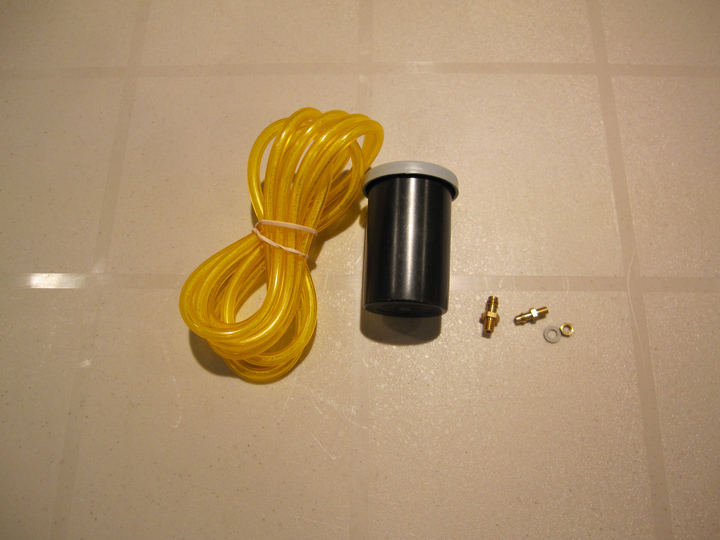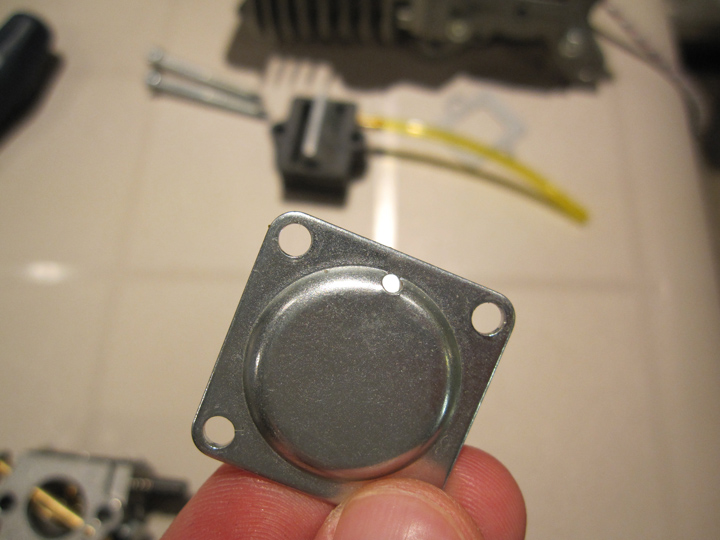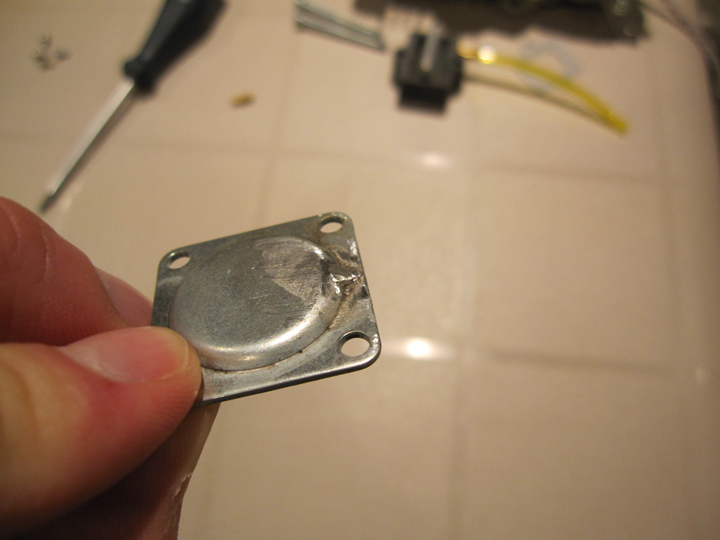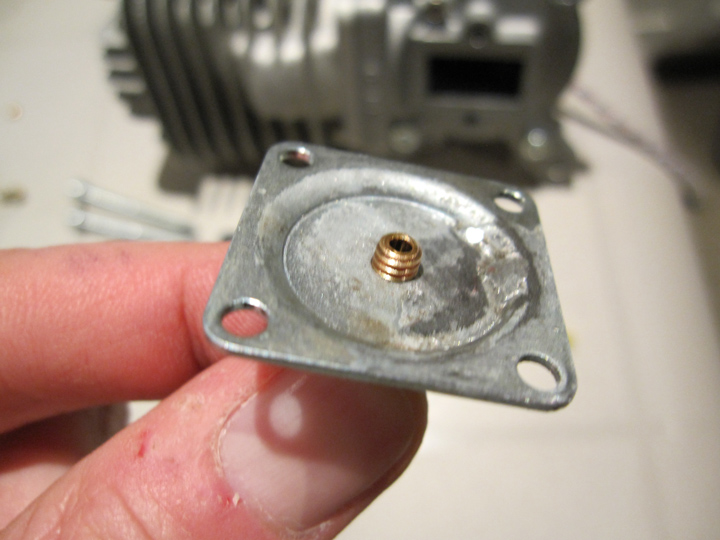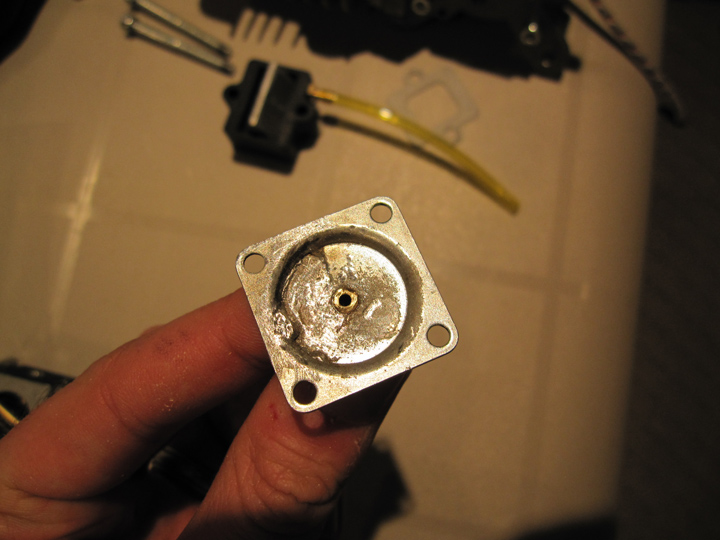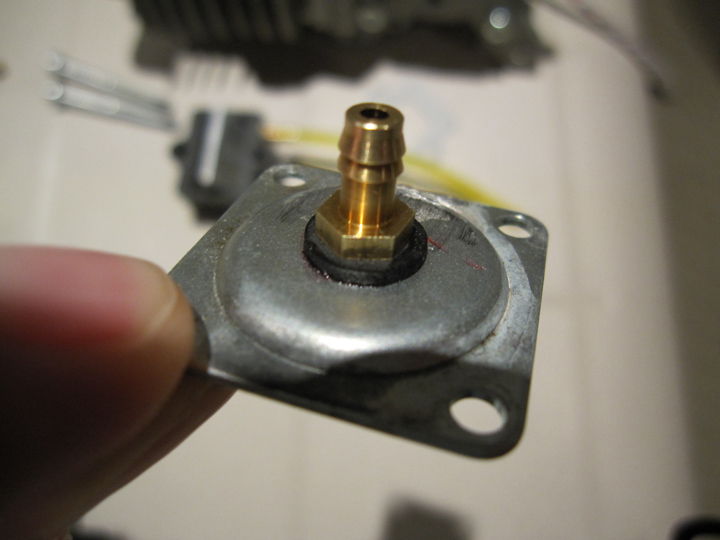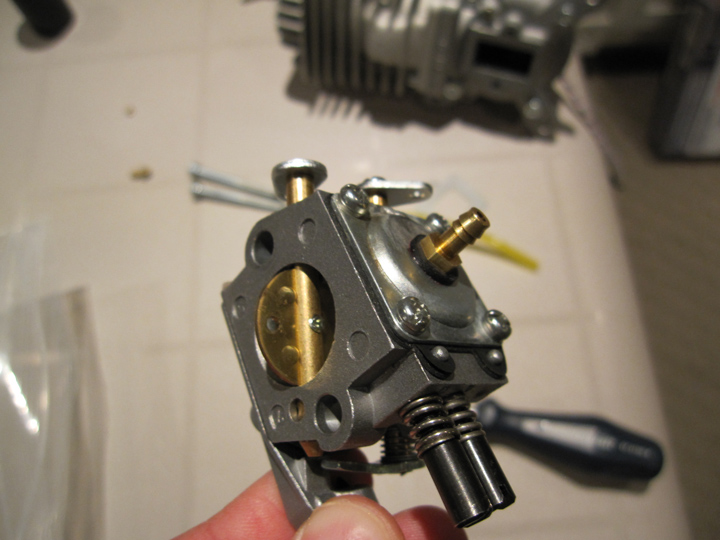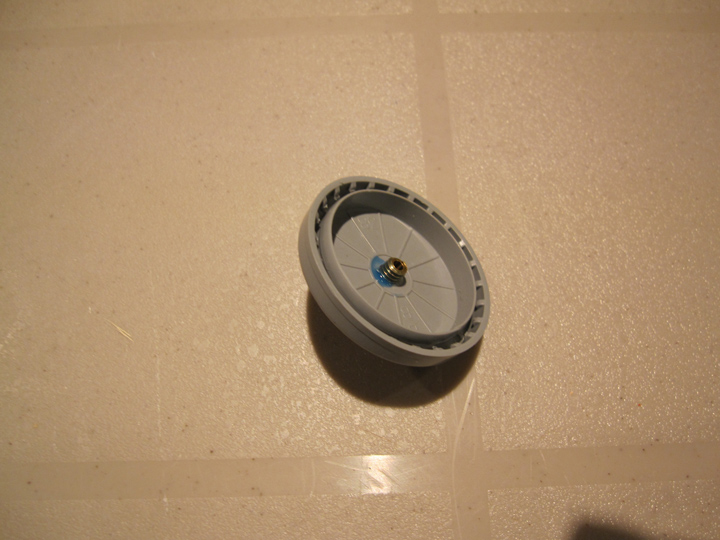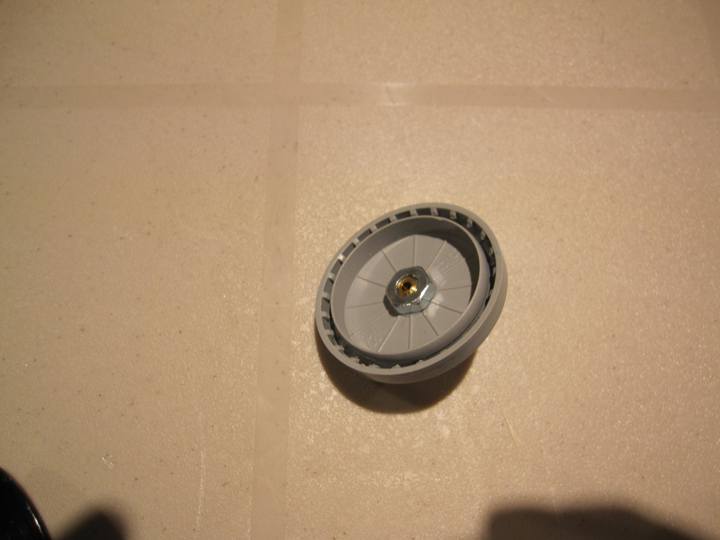Equalizing you Gas Engine Carburetor
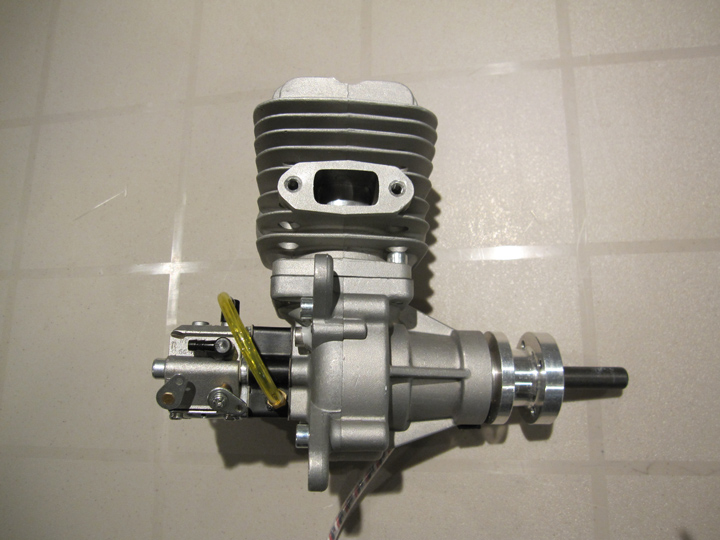 2-Stroke Gas Engine (DL50).
Walbro Carburetors and Atmospheric Pressure
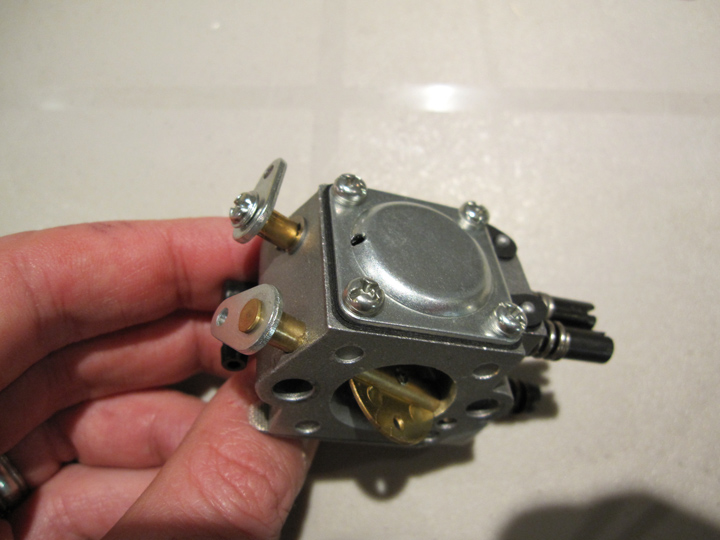 Walbro Carb - Diaphram Plate.
Items you will need
Here's a list of Items you will need to install a carburetor equalization kit.
- Pressure Fitting for your carburetor. These are available at Thunderboltrc.com at this link: Click Here
- Appropriate Drill and Tap for the pressure fitting you decide to use.
- Fuel Line. This is available at Thunderboltrc.com at this link: Click Here.
- A 35mm Film Canister or Pill Bottle
- Soldering Iron and Solder (Silver Solder works best).
- Dremel or Rotary Tool.
Alternatively, you can get the 35mm Film Canister (pre-drilled with a pressure fitting), a carb pressure fitting, and Fuel line, in a kit from Thunderboltrc.com at this link: Click Here
Remove the Diaphram Plate
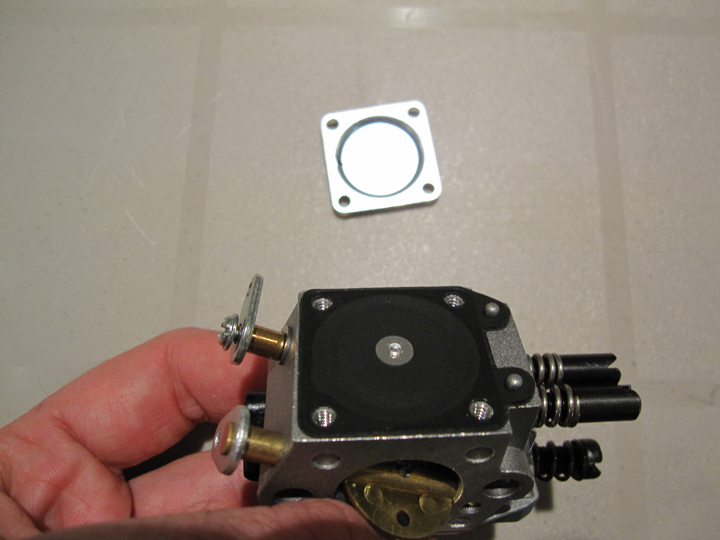 Diaphram Plate Removed.
Solder the existing Carburetor Vent Hole
With the diaphram plate removed, notice the small hole in it. This is the vent hole. Solder this hole shut (so that no air can move through it). Try to keep the solder to a minimum and sand or grind any excess solder away. Make sure that the plate can sit flat without any solder obstructing it.
Drill and Tap the Pressure Fitting
With the existing vent hole covered. Drill and tap a new hole for the pressure fitting. Drill the hole in the center of the plate. Make sure you use the proper drill size for the tap you are going to use. For example: If you use a 6-32 size pressure fitting, use a #35 drill bit. Once the new hole is tapped, insert the pressure fitting (make sure you use a gasket or some gasket sealant and thread locking compound. Grind or sand down the extra threads on the pressure fitting flush with the inside of the diaphram plate. Allow the thread locking compound and/or gasket sealant to cure. (Don't allow any thread locking compound or gasket sealant to come into contact with the carb diaphram.
Reinstall the Diaphram Plate
The finished diaphram plate should look similiar to the picture on the left. Once you are finished installing the pressure fitting, make sure the diaphram plate is clean (remove any metal dust, etc). Also, make sure that the pressure fitting allows air to freely pass through it. Once that is done, reinstall the completed plate on the carburetor.
Prepare the 35mm Film Canister
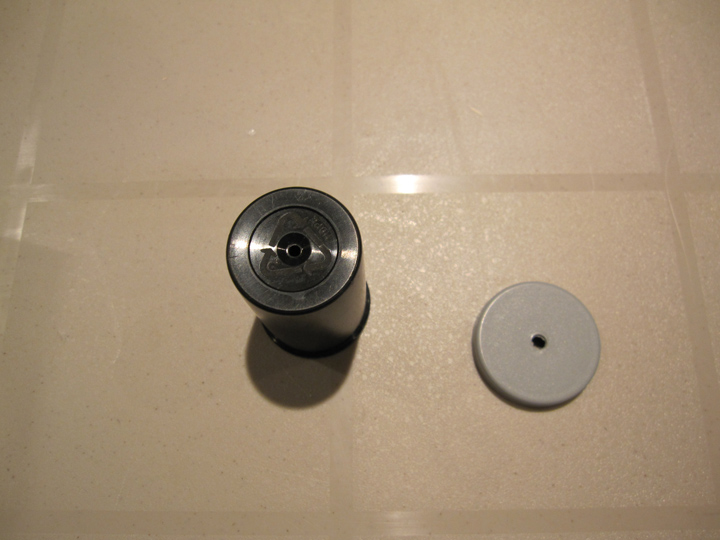 35mm Film Canister drilled.
Install the Pressure Fitting on the Film Canister
With the holes drilled in the film canister, insert the pressure fitting into the film canister lid (use a gasket or gasket material) and apply thread locking compound to the exposed threads. Tighten the pressure fitting with the appropriate nut.
Reinstall the Carburetor and Attach Fuel Line
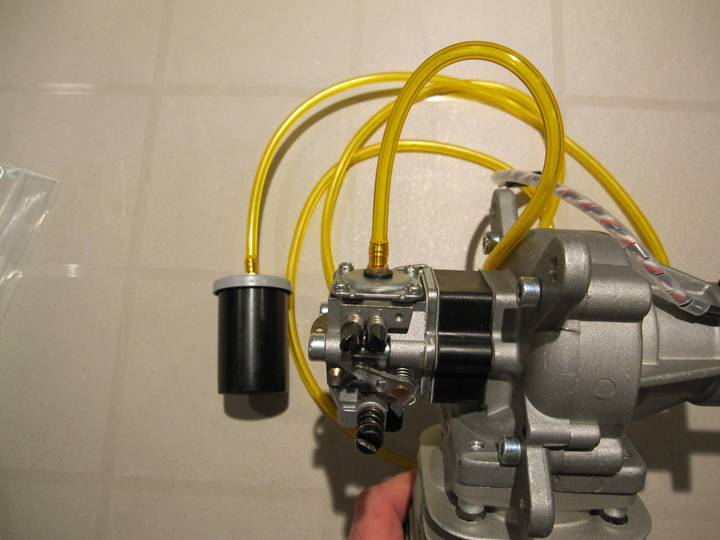 Kit Installation Complete.
Install the Film Canister in the Fuselage
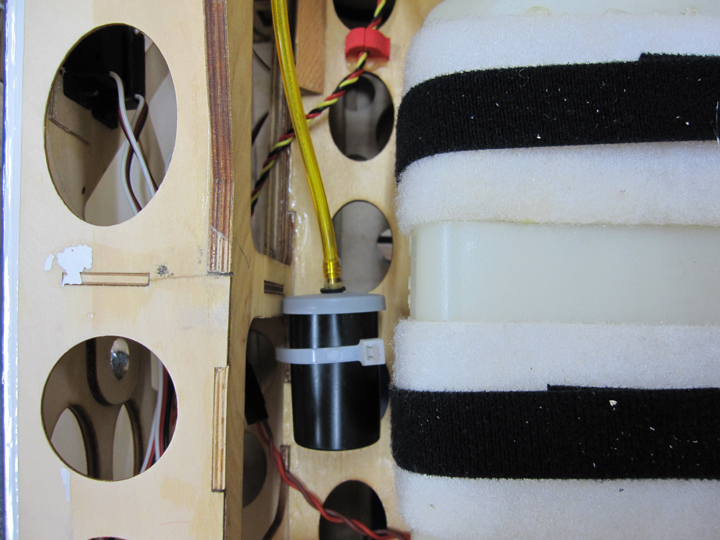 Film Canister mounted in fuse.
That's it! - Go fly!
|


